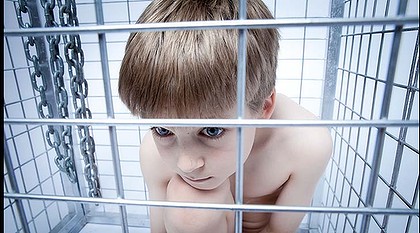Sydney Morning Herald – May 15, 2011
by Andrew Taylor
A BOY crouches naked in a steel animal cage, with the downcast eyes of a prisoner.
This confronting image, meant to represent a ”chemical cage” of drugs to treat attention deficit hyperactivity disorder, is part of an exhibition called Ritalin by photographer Sean O’Carroll.
O’Carroll, a former teacher, said the exhibition expressed his concern about the widespread administering of what he called addictive mind-altering drugs to young boys, which was ”a catastrophic failure on the part of our society to deal with the challenge of raising active, energetic and ‘difficult’ boys”.
”It makes my stomach churn. I feel like it’s a dangerous abuse of their rights as human beings.”
The show, which opens in Melbourne in July, features seven boys, including O’Carroll’s sons Moses, 4, and Elijah, 3, as well as two nephews and the sons of friends.
One image from the exhibition is on display at Gaffa Gallery in Sydney alongside the photographer’s Boys, Guns, Etc? exhibition of near-naked photos of toddlers holding toy guns.
O’Carroll said the boys were ”very enthusiastic” about appearing in the photos. ”It’s the parent who needed lots of time and discussion and attention. The kids were like, ‘Oh, cool, I’m an animal in the cage,’ or ‘The baddies have caught me,”’ he told The Sun-Herald.
The Melbourne photographer said he had deliberately made the images confronting. ”In a sense I’m utilising the current hysteria around nudity to make my point about something far more dire.”
Figures from Medicare show that more than 57,000 children were on ADHD drugs, in 2009, including about 23,000 children from NSW.
O’Carroll’s strong views are shared by the West Australian Labor politician Martin Whitely, who describes Ritalin as a ”chemical cage” and has called for an end to federal government subsidising of Ritalin. ”Currently we’re subsidising misery,” he said.
Professor Jon Jureidini, head of the department of psychological medicine at Adelaide Women’s and Children’s Hospital, said there was increasing evidence of Ritalin’s long-term detrimental affects on the brain, particularly for children whose brains were in a ”state of flux”.



SHARE YOUR STORY/COMMENT